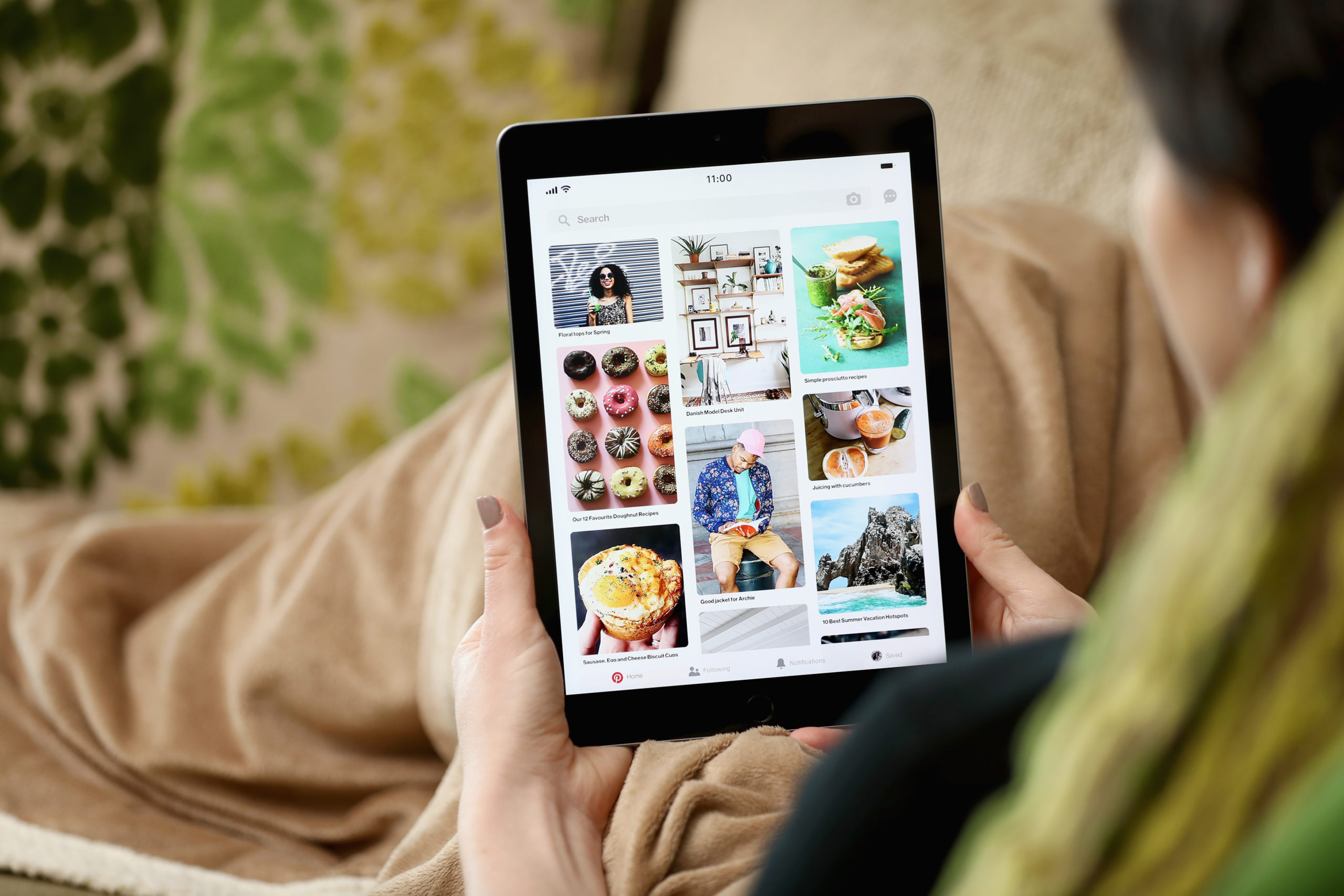During a tough pandemic year, the image-sharing and social media service Pinterest rebounded mightily. According to cnbc.com, shares of Pinterest surged in trading late in October, closing up nearly 27 percent after a third quarter in which total revenues jumped to $443 million. That’s an increase of 58 percent year over year. Why is Pinterest growing, and what sets Pinterest apart from some of the other big advertising apps? What can you do to capitalize on what Pinterest has to offer? Read on to learn more.
Why Is Pinterest Growing?
As reported by The New York Times, widespread shelter-in-place during the pandemic has meant that expenses like travel, restaurant dining, and even clothing shopping have dropped considerably for most people. Some consumers have channeled money that might, in a different year, have gone towards an exotic vacation into purchases that help make their homes a cozy sanctuary during an uncertain time: updated furniture, for example, or new dishware. Enter Pinterest, which has become an important site for people to share ideas with one another about everything from recipes to decorating. As Emarketer analyst Andrew Lipsman notes, Pinterest is “especially well positioned for the moment.” That’s because users are looking to Pinterest for inspiration during a time when the idea of “nesting” seems more attractive than ever.
What Sets Pinterest Apart?
That connection with audience is one of the things that makes Pinterest especially interesting to advertisers. As CFA Andres Cardenal notes here, Pinterest’s business model lends itself to a symbiotic relationship between consumers and advertisers. When Pinterest users “pin” images they like to specific boards (much like someone tacking a physical artifact of a favorite recipe or vacation destination to a cork board in their office cubicle), Pinterest’s algorithm takes note and suggests new pins based on the user’s interest. (Think the coworker who might notice your Grand Canyon virtual Zoom background, and recommend checking out the hiking at Yellowstone.) Some of Pinterest’s suggestions can take the form of advertising, and as Cardenal points out, a useful ad that “gets” a user is a very different animal from invasive advertising. He also notes, “Pinterest is focused on inspiring and uplifting content, which sets it apart from the big social media platforms.” And during a chaotic year, the power of inspiration and uplift cannot be underestimated.
Another reason Pinterest is popular is because it is highly visual. We live in a visual age! As far back as 2014, Business Insider reported that people were uploading 1.8 billion images to platforms like Facebook, Instagram, and Snapchat every day. Recent stats shared by the Omnicore digital marketing agency indicate that as of 2020, on Instagram alone, 995 photos are uploaded every second. And people respond to images: as HubSpot noted earlier this year, Tweets with images earn 150 percent more retweets than tweets without; Facebook posts with images enjoy 2.3 times more engagement than those without; and articles with an image every 75 to 100 words get double the social media shares compared to articles incorporating fewer images. Bottom line: content with visuals gets shared and liked more than content that lacks visuals. There is no turning back.
Finally, Pinterest is interesting to advertisers because it’s a hub for cultural trends. As noted in yahoo!finance, Pinterest and its advertisers take trend-watching seriously. Witness the Pinterest 100, the platform’s annual report that showcases emerging trends around the world. Pinterest is a goldmine for understanding not only what is popular, but what’s coming next. And if, as a brand, you understand the trends, you can learn where your particular “in” is. You’ll stay relevant.
What You Can Do
Advertisers can benefit from Pinterest’s uplifting connect with its users, visual nature, and understanding of what’s cool. We recommend that you:
- Dig deeper into Pinterest’s user base. Understand who they are. As reported by Omnicore, 69 percent of Pinterest users are between the ages of 18 and 49. These are folks with a lot of earning power—more so than younger teens, say, who might more likely be found on TikTok or Snapchat. Pinners are also more likely to be women: 71 percent, according to the Omnicore stats. How does your messaging resonate with this audience?
- Get to know Pinterest advertising options, such as:
- Promoted Pins appear in the search results and home feed as regular pins do, but they are boosted and targeted to deliver more reach. Users can pin them to boards, comment on them, and share them. Note that after a Promoted Pin is shared once by a Pinner, the “Promoted” label disappears, with repins considered “earned media.”
- Promoted Carousels feature two to five images that users can swipe through. This can be a useful format for brands who wish to showcase multiple products or features.
Contact True Interactive
Can Pinterest help you connect with your audience in new and exciting ways? Contact us to learn more.
